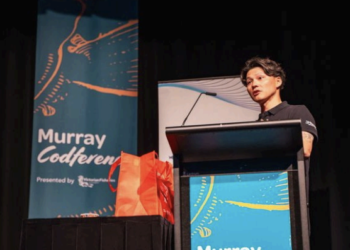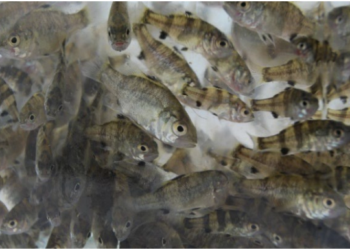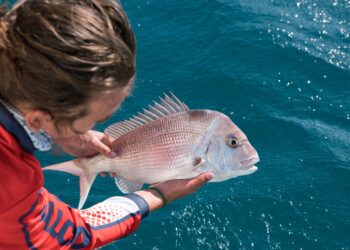
TENS of thousands of fish have been recorded flowing through constructed fishways in Mackay.
The fish count is above published figures for previous fishway monitoring in the Murray and Burnett rivers, prompting researchers to ask if it could be among the highest recorded in Australia.
Fisheries biologists say the soaring numbers are proof the fishways are playing a vital role in providing clear passage through a formerly disconnected aquatic ecosystem.
Recent monitoring (funded by local NRM Group Reef Catchments and the Australian Government) show fish streaming through the underwater environment in droves.
“The results have shown unbelievable numbers of fish migrating through the system,” said fisheries biologist Matt Moore, from Catchment Solutions (fisheries research consultancy contracted to deliver the monitoring).
“We thought our initial catch was pretty good, with 3,653 fish recorded successfully ascending the fishway at the Mackay Gooseponds wetlands.
“However, this was trumped the following day at the same site with over 18,000 fish captured in four hours in the morning, and over 13,000 fish in the afternoon – bringing the total to over 31,000 in 8 hours.

“This is by far the most fish we have ever recorded in any local fishway, and would be up there with the highest ever recorded in Australia that we know of – fishways in the Murray River have recorded up to 4,415 fish per day and in the Burnett River 4,500 fish per day.
“These are exciting results that demonstrate the importance of facilitating connectivity past fish barriers – particularly the first barrier located upstream from the estuary, even on small ordered streams.”
Thanks to the fishway, the Mackay Gooseponds constructed wetlands (located in the Mackay urban area) is now better connected to Janes Creek and the wider Pioneer River Basin.
Some of the species recorded included juvenile barramundi, red scat, crescent perch, sea mullet and empire gudgeon – all valuable environmental and socio-economic species.
Significantly, further monitoring at Boundary Creek wetlands captured 43 barramundi fingerlings, including the smallest barramundi ever monitored locally at 30 mm.
“These little guys must have moved out of their coastline habitats behind the mangroves and then migrated upstream to the wetland via the fishway,” Mr Moore said.
“This is extremely significant because small fish possess weaker swimming abilities than larger fish…at 30 mm they have only just started swimming, as opposed to hitching a ride with the currents and tides prior to this”.

“This demonstrates that the fishways provide suitable conditions for weaker swimming juvenile fish species. This is great news for Queensland’s most important commercial inshore net fish species. Fish passage restoration works like this are a real credit to organisations such as Mackay Regional Council and Reef Catchments NRM who are taking it upon themselves to improve local fish populations”
Reef Catchments general manager Katrina Dent said it was essential organisations like Reef Catchments could continue to fund environmental monitoring.
“These are fantastic results that really contribute to our knowledge of the aquatic ecosystem, both in Mackay and nationally.
“Reef Catchments is pleased to have helped drive this research. These are the kind of figures we need to continue to secure funding to construct more fishways in priority areas.”
Monitoring was supported by Reef Catchments and delivered by Catchment Solutions, through funding from the Australian Government’s National Landcare Programme. Fishways were funded by Mackay Regional Council and Reef Catchments NRM.




















